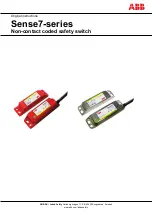
121
NS3503-16P-4C User Manual
Automatically reconfigures the spanning tree to compensate for the failure, addition, or removal of
any element in the tree.
Reconfigures the spanning tree without operator intervention.
Bridge Protocol Data Units
For STP to arrive at a stable network topology, the following information is used:
The unique switch identifier
The path cost to the root associated with each switch port
The port identifier
STP communicates between switches on the network using Bridge Protocol Data Units (BPDUs). Each
BPDU contains the following information:
The unique identifier of the switch that the transmitting switch currently believes is the root switch
The path cost to the root from the transmitting port
The port identifier of the transmitting port
The switch sends BPDUs to communicate and construct the spanning-tree topology. All switches
connected to the LAN on which the packet is transmitted will receive the BPDU. BPDUs are not directly
forwarded by the switch, but the receiving switch uses the information in the frame to calculate a BPDU,
and, if the topology changes, initiates a BPDU transmission.
The communication between switches via BPDUs results in the following:
One switch is elected as the root switch
The shortest distance to the root switch is calculated for each switch
A designated switch is selected. This is the switch closest to the root switch through which packets
will be forwarded to the root.
A port for each switch is selected. This is the port providing the best path from the switch to the root
switch.
Ports included in the STP are selected.
Creating a Stable STP Topology
It is to make the root port a fastest link. If all switches have STP enabled with default settings, the switch
with the lowest MAC address in the network will become the root switch. By increasing the priority
(lowering the priority number) of the best switch, STP can be forced to select the best switch as the root
switch.
When STP is enabled using the default parameters, the path between source and destination stations in
a switched network might not be ideal. For instance, connecting higher-speed links to a port that has a
higher number than the current root port can cause a root-port change.
STP Port States
The BPDUs take some time to pass through a network. This propagation delay can result in topology
changes where a port that transitioned directly from a Blocking state to a Forwarding state could create
temporary data loops. Ports must wait for new network topology information to propagate throughout the
network before starting to forward packets. They must also wait for the packet lifetime to expire for
Содержание NS3503-16P-4C
Страница 1: ...NS3503 16P 4C User Manual P N 1073221 REV A ISS 08SEP16 ...
Страница 143: ...141 NS3503 16P 4C User Manual Figure 4 7 3 Multicast Service Figure 4 7 4 Multicast Flooding ...
Страница 302: ...NS3503 16P 4C User Manual 300 The screen in Figure 4 16 5 appears Figure 4 16 5 PoE Schedule Screenshot ...
















































